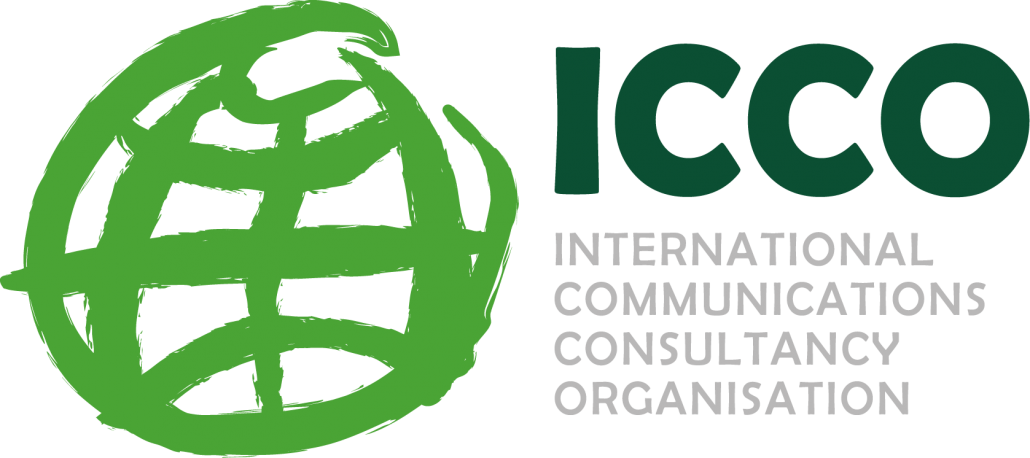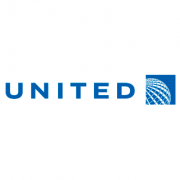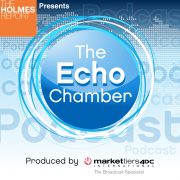The Holmes Report CEO Arun Sudhaman talks to Maxim Behar on modern PR, old school, building teams, social media, ethics and fake news
Arun Sudhaman: Welcome to the Echo Chamber. This is Arun Sudhaman from the Holmes Report. We are very lucky to be joined today by Maxim Behar, who is the CEO and Chairman at M3 Communications Group, Inc. in Bulgaria, and of course, widely known around the global PR industry as the President of the International Communications Consultancy Organization (ICCO). Max, welcome to the Echo Chamber podcast.
Maxim Behar: Hello, Arun. Very nice to be with you in this prominent program.
AS: Thank you very much. So, Max, you have been doing a lot of traveling around the world for your ICCO duties. It seems you have been speaking at most of the conferences on PR in various countries. I am curious to know how you are seeing the growth of the global PR industry from your perspective.
MB: I don’t call it growth, I would call it rather change. Because in some countries, which are more advanced in the social media and in some countries where people do understand the market as general, understand the changes in our business, there might be growth. But in other countries where people are not so advanced to change rapidly the way they do their business, the approach to their customers, it is not necessary to be growth. But the fact is that nowadays PR business is the most dynamic business in the world, having in mind that since many, many years, more than 100 years, since this business existed, there is one change, which happened several years ago and has never ever happened before. And this is the ownership of media. You remember, Arun, something like 10 years ago the clients were coming to our offices, they entered our big conference rooms, they sat down and said: “Mr. PR expert, please, help us to get our product to the media. Because that was our main business – how to get to the media, how to make it more attractive, more interesting, what would be our approach to the journalists, how to attract them. But these days they don’t need to do this and we don’t need to do this, because we all own media. The first and most important change to our business, which happened recently, is that from mediators, from bridges between media and our clients, now we are much more managers or publishers than mediators. So, it means that in our offices, we should start learning how to manage media, how to make content, how to put this content in a way that it is not controversial, it is honest, ethical and also influential. So, this is really the first important change – the change of the ownership of the media. But the second change is happening these days and this is the very fast, almost invisible, but existing merge between the three main elements of our PR business – and this is advertising, digital and public relations. And there are many, many opinions among experts, which of those three businesses will lead the future business, the future merged business. And I really think it will be the Public Relations.
AS: Now, it is interesting what you have talked about in terms of the change. But I wonder in some of the less mature PR markets, that you and I are both familiar with, is it that much of a change, or is it just kind of what they have known about what have the PR started with? Perhaps, they are more comfortable with this new reality, because they haven’t had to change.
MB: It is a change. It is a big change. Sometimes, even very often the clients don’t understand that we operate in a different communications environment, because the commercial environment very often is the same. And when they approach us, and negotiate with us, PR companies or experts, they really prefer that we operate with the same, old-fashioned ways and instruments, and tools – just to invite journalists, to have a media breakfast, to start convincing them how good is the product or service, but in fact this is a change. Because even the traditional media, they take their news from the social media, as social media are much faster, much more independent, which is their biggest advantage, and also I would say much more influential than the traditional media.
AS: It is interesting because it seems to me that these changes require in many PR markets perhaps a different consideration of the types of skills, and the types of talent, that work within whether it is PR agencies or communications departments. How do you see in that play out? Do you feel like that the industry is doing a good job in bringing in different skills?
MB: You are absolutely right. In our offices we observe total change of the skills which the stuff or the managers should have regarding the new way of doing business. First of all, we should emphasize very much on the speed. In order to react in a high speed in a PR situation or crisis we must be absolutely well prepared. Something which happened 10 years ago in 10 minutes now we don’t even have 10 seconds to solve it. It requires a lot of preparation and a lot of simulation training of different PR cases which may happen. And another example, 10-12 years ago the clients were having crisis in the morning in the newspaper and then usually we had about 10 hours to solve this crisis – to had a press conference or a press message, meet the client, discuss with the team. But if we had 10 hours in the past, now we don’t have even 10 seconds. Once the bad news is online it may spread in a way that it will go beyond our expectation, it will go internationally, it will reach many more countries, it may hurt the international business plans of the client. So the advanced preparation is one of the most needed requirements, which we have in our offices. Secondly, simplicity is something, which is very crucial. Nowadays we are overloaded with international news, different information, social media, some of this information is fake, even if not majority of this information might be fake depending on the case. So we must create a very simple way to differentiate the most important news, the priorities we have in a way that our client feels in good and secure hands. So providing very fast service to them, emphasizing on the priorities of the projects, is something which is the base of the modern PR, not talking excellent knowledge how to create content, how to create a story, how to make this story a real one, influential one, but also very interesting and serving the client. Because I know a lot of people are dealing now with a storytelling and in every second forum or summit or conference I go storytelling is obligatory one of the main topics, but in the end of the day storytelling is nothing else than journalism. Because we are journalists. I used to be a journalist for about 20 years. And what were we doing in the newspapers, radio stations or TV channels? We were creating stories – nice stories, good stories, interesting, catchy. So that is the job of the PR expert these days. And going back to my vision or point of view that now we should be masters of the content it covers really the biggest change.
AS: It seems that in the kind of skills that are required there are as you mentioned a change. As you may not always be that easy to find people who can do all of those things. What does it look when you hire new people?
MB: Usually I am training them, because I don’t think the old-school PR professionals or experts might be changed very easily. So the new generation, the Generation F, which I call them up to the title of my book a couple of years ago, Generation F, which comes from “Facebook”, “Fear”, and one more word with four letters. A lot of young people say “We don’t care”. They say: (sorry for the language) “Fuck off. We don’t care. We don’t want to live in this world, we would like to live in another world with different relations, we don’t want to be approached by fake profiles, by fake news, by trolls. So the second word was “fear”, because a lot of people experience a lot of fear from the new media environment. Because they are not used to this. In the past we used to have one TV channel and one newspaper, and that was it. But the Generation F, the new generation, which manages very well with the new environment – I think is very easy to be trained. And also in our business I see a very weak enlargement of the need of professionals in different fields. And I usually say I can make from a doctor a good PR expert in 6 months. But I cannot make from a PR expert a doctor. So it means that I hire doctors, engineers, financial experts, and train them in our offices to learn how to manage with the social media and the public communications and it is a much easier way than to rely on (sorry to say that) the university education. What I see recently is a huge gap between the university education in PR or marketing and our practice. And this is because, as a trend all over the world, education is moving 20 miles/h and in our offices, in case studies, in practice we are moving with 100 miles/h. And it is not the problem of two speeds, it is a problem of the fact that if they are moving with 20 miles/h and we are moving with 100 miles/h, then this gap between us is getting bigger and bigger and bigger, so in any case we hire a person graduated in Marketing or PR anywhere in the world, and I still need to train this person 6 to 8 months in the office, to explain the practical approaches, the practical ways to make PR successful and to make our clients happy.
AS: So when you are looking for someone to hire, even if you are going to train them, what are the characteristics of people, who you are looking for?
MB: It might be weird for you, but I will tell you now. When I have an interview I usually look at the eyes of the candidate and I have one and only one request to the candidate – and this is “sparks in the eyes. Because if the young man or woman have these sparks in the eyes – it means they are ambitious to make a career, to handle the business, to be better and better professionals. It means that everything might be fixed. Because I can make from an amateur a professional from 6 to 8 months, but I cannot make from a lazy person a hardworking one. I cannot make from someone, who creates intrigues within the team, a team worker. So these are characteristics that most probably cannot be changed. So for me, of course English language, and some communication skills are the basics, which I am not even talking about, but when I see that a person has a good attitude to the business, which I called “sparks in the eyes” and would like to make a successful career, then for me it is more than enough. Nowadays you can teach very easily your employees.
AS: That is a great point and I think a useful one for anyone who wants to have a successful career in this industry should bear in mind. So you mentioned Generation F – it seems to me that when you write the next edition of that book you can add another four letter word beginning with “F” – “Fake”. What do you thing the fake news era means for the PR practitioners?
MB: It is a very good point because unfortunately the word “fake” has been circulating in our business much more aggressively in the past 1 to 2 years. And the reason, first of all, is fake news which became much more visible during the US elections last year, but also were existing and still are existing in many countries in the local elections and they concern mainly politicians and politics. I think that this is a problem for the PR business, because we must unite ourselves, we must declare to the society that the professional PR business has to do it transparently, ethically, of course, to take engagement, to take the full commitment that PR professionals will never use trolls, will never use nicknames, will never work illegally on Wikipedia, which happens very often, will never try to influence the society with illegal approaches, or approaches which are very much on the border of legally and illegally. So this is an important task again because PR experts in the past years started to create content. We are the content managers. If we create content and if we are journalists from a certain point of view, because it is a journalism – even to write a short post on Twitter, or even to write a post on your Facebook wall. It is also journalism. So, it is very actual for ICCO, we are discussing with our Board and our Executive Committee to launch a code of content, which will make all the real PR professionals to commit themselves that they will stick to the code of content and whenever they write content it will be only transparent, only the truth, only the real one. So if we manage to convince our colleagues from the PR business worldwide it will be a great step ahead.
AS: Is this something that you are looking to do via ICCO because it seems that it would be a good vehicle to develop this kind of a code of conduct?
MB: We have a draft Code of conduct written by me to discuss within the Executive Committee, and I would like to put it to the attention of the Board very soon. I also had long and extensive talks with my colleague from IPRA, who you know very well – Bart de Vries, the President of IPRA, so we agreed both ICCO and IPRA, that if we have a good basis for such a code of conduct or code of content we will sign it together. ICCO and IPRA, I guess, can cover something like of 60-70% of the PR business all over the world. And it would be a good message. But again I don’t expect that the politicians will sign and promise something. I don’t expect that the media will say we will keep the ethical standards, we will write only the good truth and the reality. Or they can say it is OK and they fully support this. But I think that also it is a code of the PR business to say a word, to make an international appeal that we should keep the standards of honest and ethical business.
AS: Tell us a little bit about your work at ICCO. I think it would be useful perhaps for our listeners to get a better understanding of what ICCO does and perhaps what benefits it could bring to agencies that are part of the organization.
MB: The International Communications Consultancy Organization is a great community, which I am involved within the Executive Committee and the board for the past 12-13 years. And I had the privilege and the amazing chance to follow the development of ICCO, which nowadays unites 48 countries. And we unite the PR associations with more than 4,000 company’s members of these associations. Which means that our voice is getting stronger and stronger every year. And I think that we really do represent the PR communities all over the world. And it is very worth to whatever country or organization or PR agency joins us even just of the fact to be a member of this big group of experts and professionals. With our awards, ICCO Global Awards, we gather more and more excellent projects every year, like you do in the Holmes Awards and the Holmes project, which is much more advanced than ours in ICCO, not only because of the years, but because of the coverage of the topics. I think that we have the good chemistry and the good way to work together, to cooperate. So all those contests, all those award ceremonies at the end of the day are good benchmarks, public and professional benchmarks, for all our members to know how their achievements are progressive and innovative. Secondly, we are organizing every year the ICCO Summit. A lot of people, hundreds of people are joining the Summit exchanging their opinions, but also meeting and exchanging business cards, talking to each other, getting to know the latest trends in the business. So belonging to the voice of the international PR community, keeping a good professional and ethical standards, is a big advantage for each company or national association.
AS: Max, thank you so much, not just for taking part in this podcast, but frankly for all the work you do on behalf of the global PR community. I am aware that you do most of this for no payment at all, and that is very important work. I hope to see you soon and indeed it is a good news that, of course, the Holmes report is working closely with ICCO now in terms of our own global events calendar.
MB: I would like to thank you personally and also to my good friend Paul Holmes for the excellent cooperation, for what you are doing for the PR community, because you are amazing innovators, for the event management and also for the networking between the communities. So without you, guys, maybe without us as well, but without you the PR business in the world will be completely different.
AS: Well, Max, you are too kind. Thank you very much. I hope to see you soon. I am sure I will. Thank you for taking part in our little chat today. We will be back on the Echo Chamber soon. Thank you.
MB: Thank you, Arun. Bye, bye
Full audio you can listen here: http://www.holmesreport.com/latest/podcast/article/podcast-david-singleton-on-uk-politics-maxim-behar-on-global-pr














